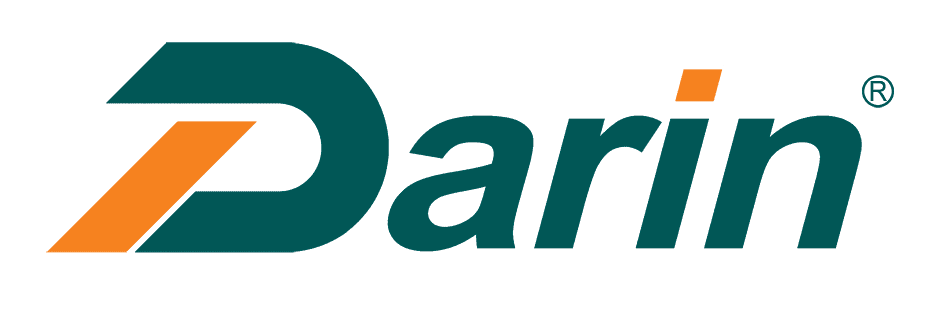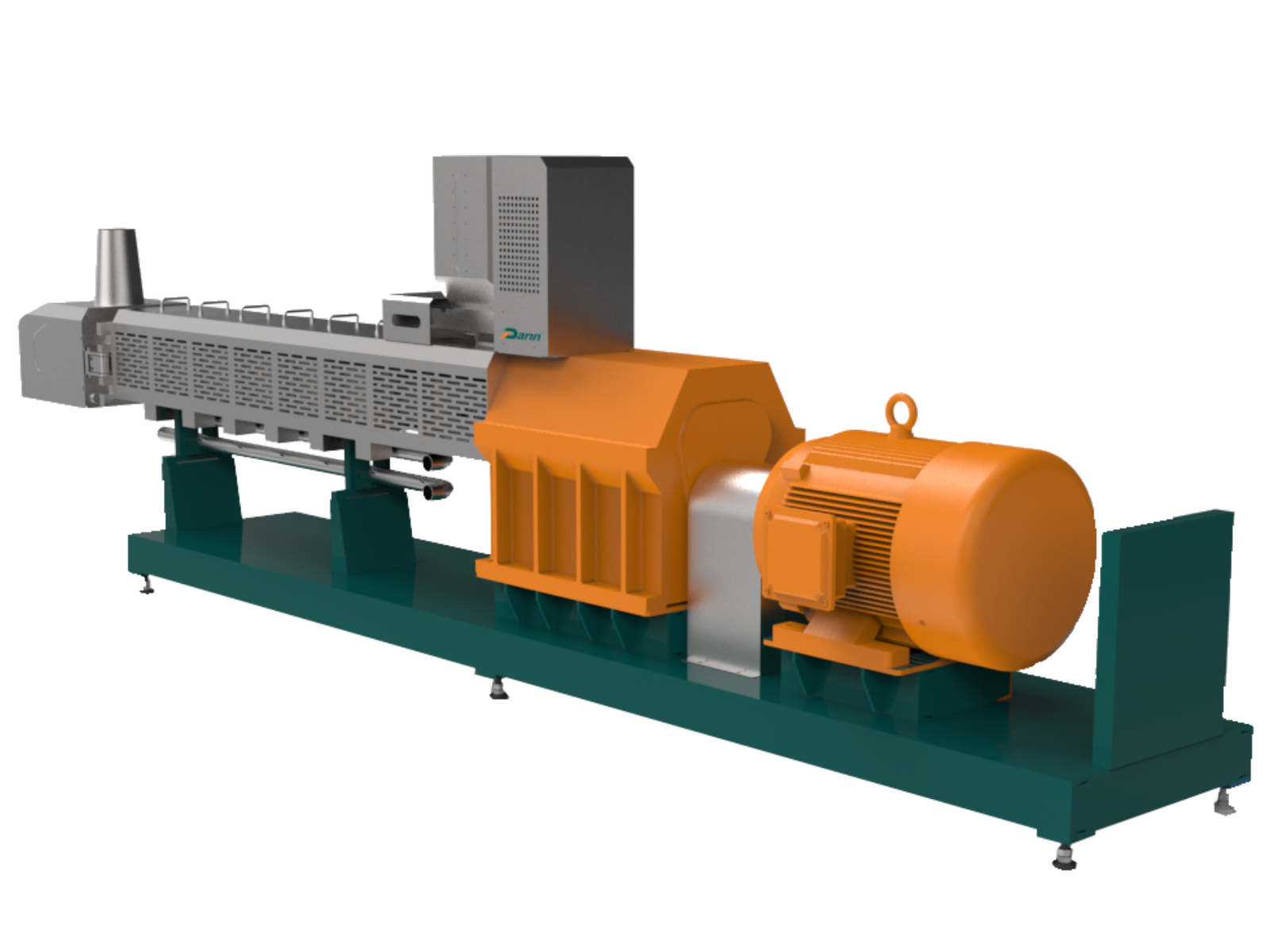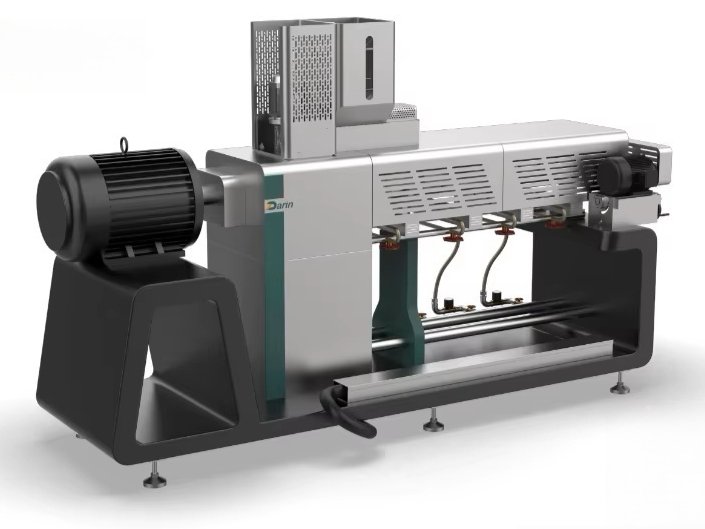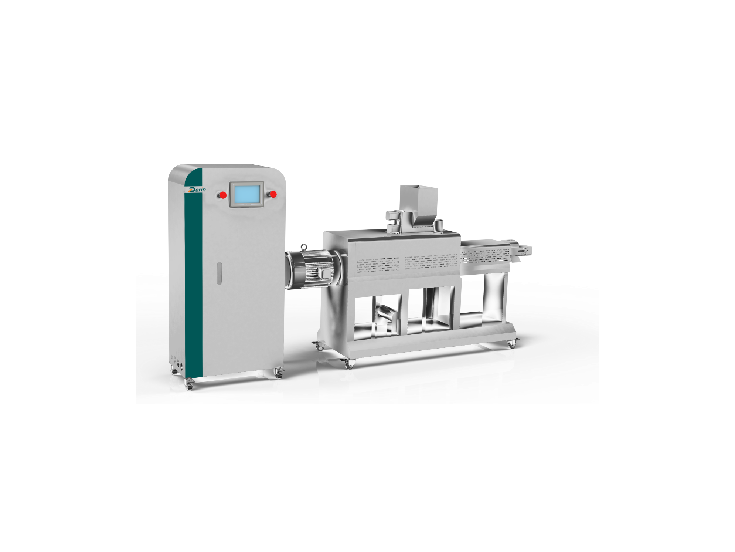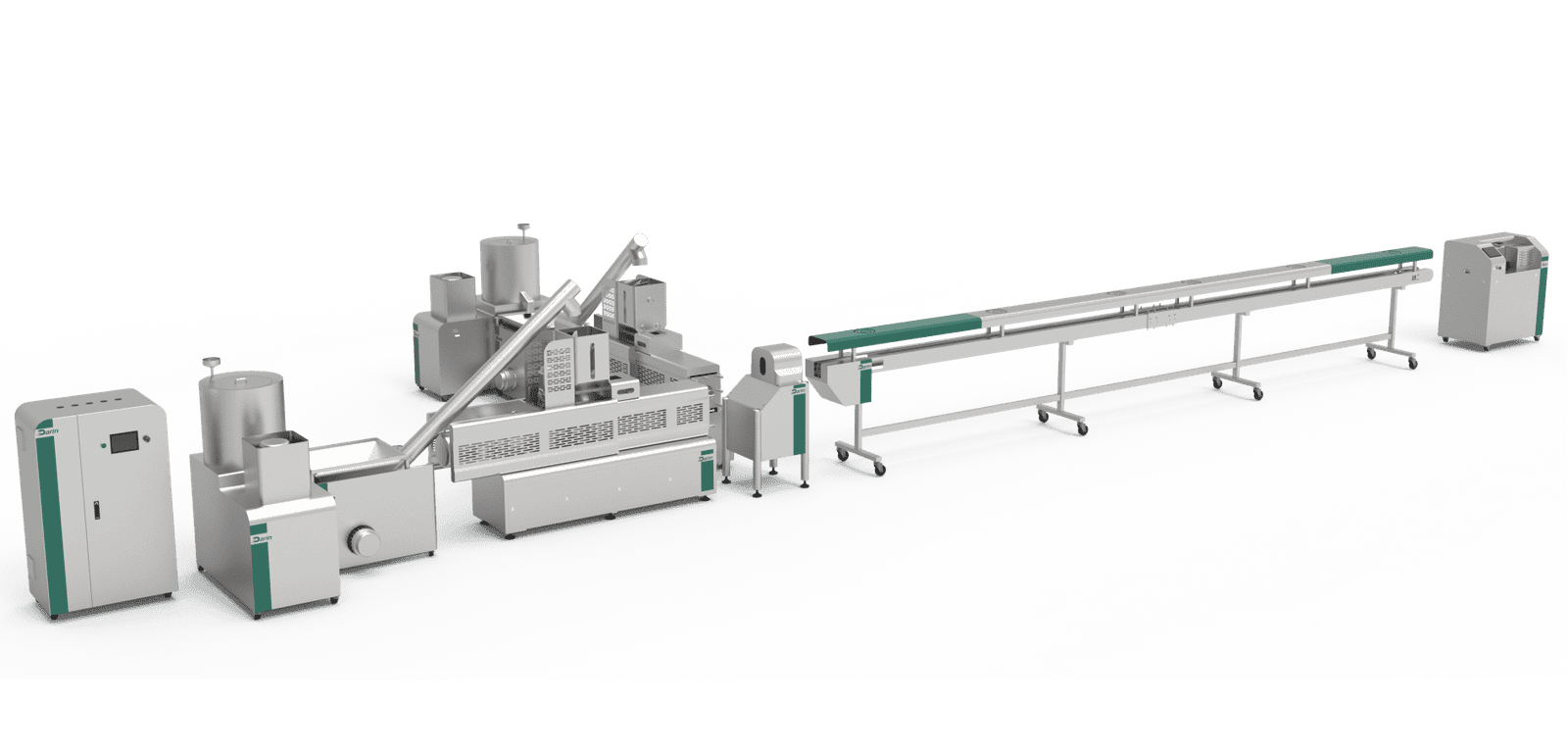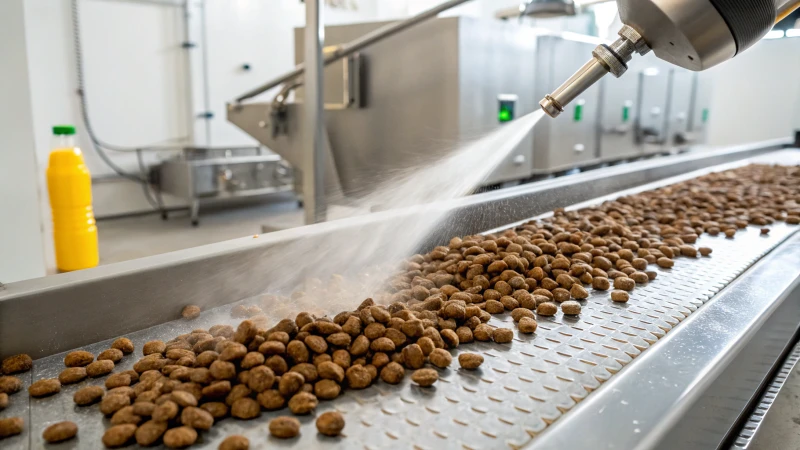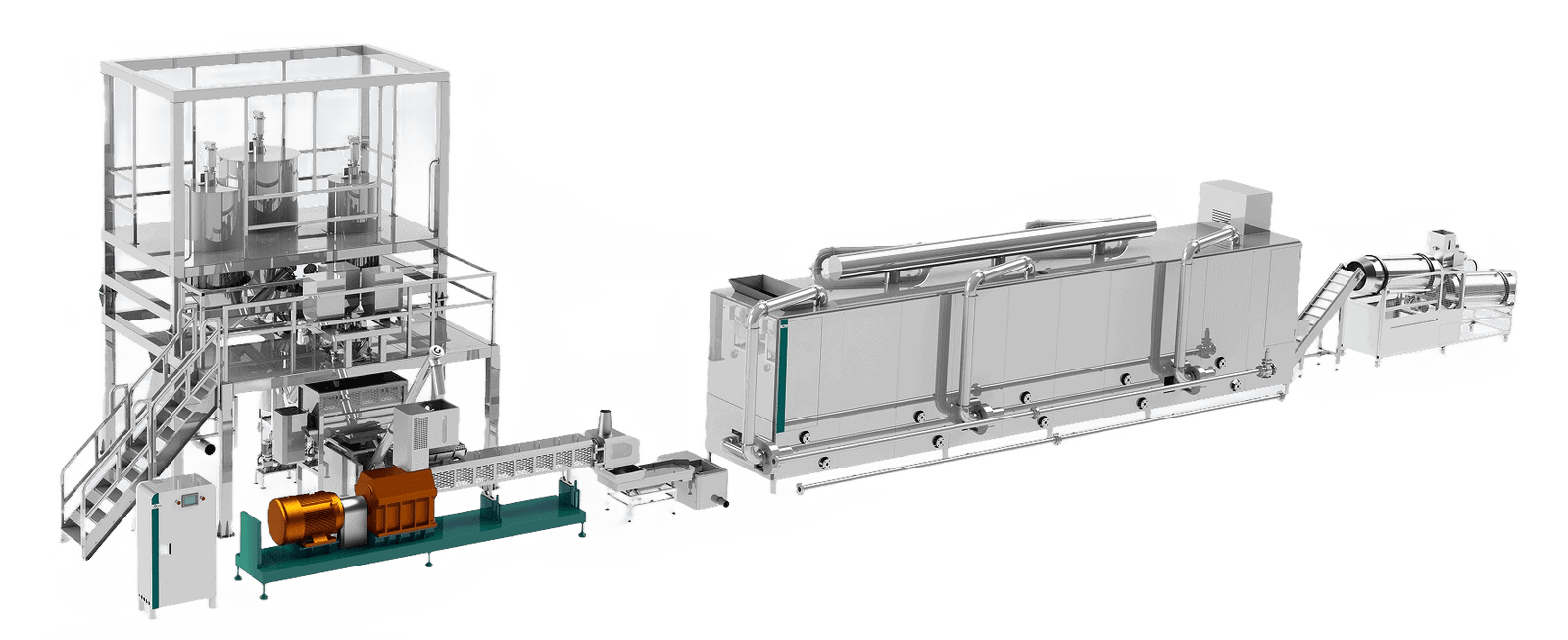
The pet food processing industry encompasses a variety of machinery designed to cater to different animal dietary needs. However, pet food manufacturers often face confusion when choosing between different types of machines, especially when distinguishing between dog food machines and other pet food processing equipment. Using the wrong machine can result in nutritional imbalances, poor product quality, and higher operational costs. To avoid these pitfalls, understanding the core differences between a dog food machine and general pet food processing machines is crucial. In this article, we will break down the specific characteristics, advantages, and technical specifications of dog food machines, helping manufacturers make informed decisions.
A dog food machine is specifically designed to process and extrude balanced, high-protein, and digestible kibble suitable for canines, featuring adjustable screw configurations, higher output torque, and precise moisture and temperature controls, unlike general pet food machines which are built to accommodate various animal diets with broader processing parameters.
While this brief explanation provides the key differences, understanding the technical nuances and operational advantages of each machine type can further optimize production efficiency. Keep reading to dive deeper into each machine's engineering, processing capabilities, and suitability for specific pet food products.
Dog food machines are the same as all other pet food processing machines.False
Dog food machines are tailored specifically for canine dietary needs, extrusion requirements, and kibble texture, making them distinct from other general pet food processing machines.
Key Differences Between Dog Food Machines and Other Pet Food Processing Machines
1. Processing Parameters and Product Formulation
Dog food machines are engineered to meet the specific dietary requirements of dogs, which differ significantly from cats, birds, or fish. Dogs need higher protein content, complex carbohydrates, and certain vitamins and minerals in precise ratios. The following table highlights the specific processing parameters for dog food machines compared to other pet food machines:
| Parameter | Dog Food Machine | General Pet Food Machine |
|---|---|---|
| Protein Content | 25-35% protein formulation, optimized for canine digestion | Varies (lower or higher depending on animal, e.g., fish requires 40-50%) |
| Extrusion Pressure | High-pressure extrusion (≥ 30 Bar) | Medium to low pressure, adjustable based on species |
| Screw Design | Twin-screw configuration with higher torque | Single/twin screw, often interchangeable |
| Moisture Content Control | Precise moisture level control (8-10% final moisture in kibble) | Wider range (5-12%), depending on end product (wet food, dry food, treats) |
| Pellet Size | Medium to large pellets (8-16 mm) to suit dog jaw structure | Small pellets (1-8 mm) for cats, fish, or birds |
| Temperature Control | Higher temperature range (120°C-180°C) to ensure kibble density and safety | Medium temperature, depending on product type |
2. Extrusion Technology Differences
Dog food machines predominantly utilize twin-screw extrusion technology. This ensures consistent blending of protein, fat, and starch ingredients while maintaining ideal textural properties for kibble. In contrast, other pet food processing machines may use simpler single-screw extruders to handle less complex formulations such as bird seed mixes or soft treats.
3. Ingredient Flexibility and Specificity
While general pet food machines are designed for ingredient flexibility, they may lack the specialized features necessary for handling ingredients like bone meal, fresh meat slurry, or high-fiber fillers commonly found in dog food formulations. The table below compares ingredient compatibility:
| Ingredient Type | Dog Food Machine | General Pet Food Machine |
|---|---|---|
| Fresh Meat Slurry | High-capacity, strong mixing, no clogging | May require pre-processing |
| Bone Meal | Efficient grinding, uniform dispersion | May cause wear, lower grinding efficiency |
| Fiber Fillers (Beet Pulp) | High torque to ensure even distribution | Possible uneven distribution |
| Vitamin & Mineral Premix | Precision feeder systems | Standard feeders without precision control |
4. Production Capacity and Energy Efficiency
Dog food machines typically have higher production capacities (1-10 tons/hour) to meet the demand of large-scale manufacturers. They also incorporate energy recovery systems to minimize production costs. General pet food machines often prioritize flexibility over capacity, catering to niche or multi-species products in smaller batches.
5. Final Product Texture and Shape Customization
Dog food extruders offer advanced die-face cutting mechanisms and shaping tools to achieve a wide variety of kibble shapes (bone, round, square) while maintaining hardness and chewability. Other machines offer fewer customization options and are more suited for simple pellet shapes.
Real Case Study: Dog Food Machine vs. Cat Food Machine
One of our clients, a large-scale pet food manufacturer, initially used a general pet food processing line for both dog and cat food products. However, they encountered issues such as inconsistent kibble density and high reject rates when producing dog food.
After switching to our specialized twin-screw dog food machine with automated temperature and moisture control, they reported the following improvements:
| Metric | Before (General Pet Food Machine) | After (Dog Food Machine) |
|---|---|---|
| Production Capacity | 2 tons/hour | 5 tons/hour |
| Reject Rate | 12% | 3% |
| Protein Retention | 80% | 95% |
| Energy Consumption | 500 kWh per ton | 400 kWh per ton |
| Pellet Uniformity | Irregular shapes | Consistent, well-formed kibble |
Technical Specifications of a Dog Food Machine
| Specification | Details |
|---|---|
| Extruder Type | Twin-screw Extruder |
| Capacity | 1-10 tons/hour |
| Main Motor Power | 55-200 kW |
| Control System | PLC + Touch Screen (Fully Automated) |
| Heating System | Electric, Steam, or Gas Options |
| Feeding System | Variable Speed Control |
| Cutting System | Adjustable Die-Face Cutter |
| Cooling System | Multi-layer Cooling Conveyor |
| Product Shapes | Customizable: Bone, Round, Square |
| Moisture Content Final | 8-10% |
| Temperature Range | 120°C-180°C |
Conclusion
Understanding the core differences between dog food machines and general pet food processing machines is essential for optimizing product quality, reducing costs, and ensuring efficient production tailored to the canine market. Dog food machines provide specialized extrusion technology, ingredient handling capabilities, and production parameters that are not interchangeable with machines designed for other pet species.
Contact Us for Customized Dog Food Machines
If you're seeking to upgrade or invest in high-performance dog food processing machinery tailored to your production needs, contact us today for expert consultation and a custom solution designed to maximize your output and profitability!
FAQ
1: How does a dog food machine differ from a cat food processing machine?
Dog food machines are typically designed to handle larger kibble sizes and specific nutritional blends suited for dogs, while cat food machines focus on smaller kibble and higher protein content.
2: What are the unique features of a dog food machine?
Dog food machines often include robust extruders, specialized cutters, and advanced mixing systems tailored for dog-specific formulas, including different moisture and texture requirements.
3: Can a dog food machine be used for producing other pet food?
While possible, dog food machines may require adjustments in settings, ingredients, and molds to suit other pets' dietary needs like cats, fish, or birds.
4: How does ingredient processing differ in dog food machines?
Dog food machines process ingredients like grains, meat meals, and vitamins in specific ratios designed for canine nutrition, differing from species-specific recipes in other machines.
5: Are there differences in the extrusion process between dog food and other pet food machines?
Yes, dog food machines use extrusion techniques optimized for kibble size, texture, and density specific to dogs, while machines for other pets adjust pressure, temperature, and moisture accordingly.
References
- Pet Food Processing Technology Overview - https://www.petfoodindustry.com/articles/10355-overview-of-pet-food-processing-technology - Pet Food Industry
- Differences in Pet Food Manufacturing - https://www.sciencedirect.com/science/article/pii/B9780128159356000045 - ScienceDirect
- Pet Food Extrusion Process Explained - https://www.petfoodprocessing.net/articles/9481-understanding-the-extrusion-process-in-pet-food - Pet Food Processing
- Types of Pet Food Machines - https://www.petfoodinstitute.org/types-of-pet-food-machines/ - Pet Food Institute
- Dog Food Manufacturing Essentials - https://www.aafco.org/consumers/understanding-pet-food/dog-food-essentials/ - AAFCO
- Cat vs Dog Nutritional Requirements - https://vcahospitals.com/know-your-pet/nutritional-requirements-for-cats-and-dogs - VCA Hospitals
- Advances in Pet Food Processing - https://www.petfoodindustry.com/articles/10320-advancements-in-pet-food-processing-equipment - Pet Food Industry
- Customizing Pet Food Machines - https://www.petfoodprocessing.net/articles/9873-customizing-pet-food-machines-for-specific-pet-needs - Pet Food Processing
- Role of Ingredients in Pet Food Machines - https://www.whole-dog-journal.com/food/pet-food-ingredients-explained/ - Whole Dog Journal
- Pet Food Production Techniques - https://www.pfia.org.au/what-we-do/how-pet-food-is-made/ - Pet Food Industry Association
